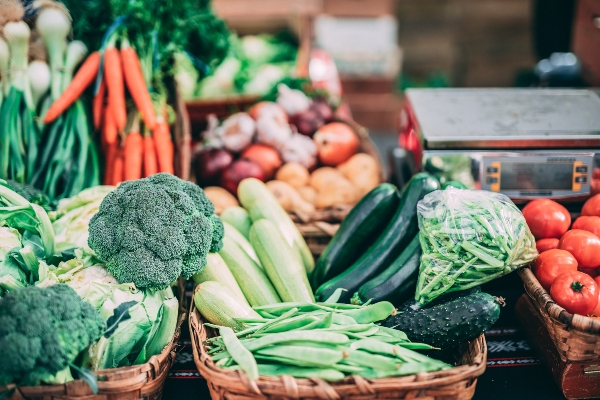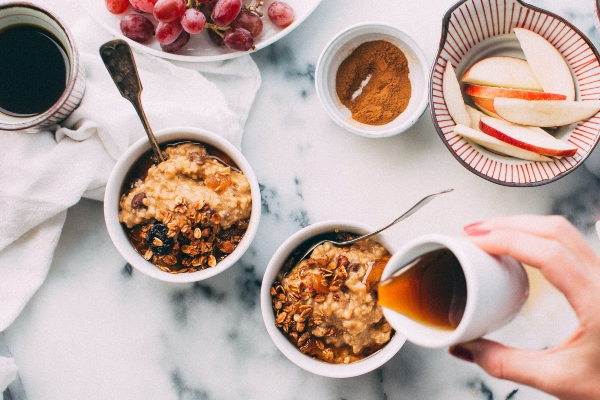An easy trick to improve our health: Eat more fibre
One study found that for every 7g increase in dietary fibre to the diet, the risk of cardiovascular disease decreased by 9%, colon cancer by 7%, stroke by 7% and T2 diabetes by 6%. So, it’s fair to say it’s an important nutrient. The recommended daily adult intake is 30g, despite this, the average person in the UK consumes on average only 18g each day.
Fibre also helps digestion, prevents constipation and increases faecal mass. It helps us to feelfuller for longer and very importantly feeds are gut friendly bacteria.

So what is fibre?
A carbohydrate from plant foods that we cannot digest.
There are 3 types:
- Soluble fibre: slows the emptying of the stomach, so we feel fuller for longer and keep blood sugar levels more stable.
- Insoluble fibre: absorbs water and increases in size. Softens contents in bowls and helps with regular bowel movements.
- Resistant starch: feeds good bacteria in the large intestine.
Why is it so beneficial?
More fibre in our diets has been linked to a lower risk of heart disease, stroke, T2 diabetes and bowel cancer. It also helps us to feel fuller for longer while helping to prevents constipation, assist digestion and increases faecal mass – better poops! Finally – it feeds our friendly gut bacteria.
Increasing the fibre in your diet
If we increase the fibre in our diet too quickly it can lead to higher gas levels in our gut. This may cause bloating, abdominal pain, flatulence and loose stools – none of which we want! It’s due to bacteria digesting resistant starch which forms gas.
I would suggest slowly increasing fibre in the diet rather than one big jump and also spreading out your intake throughout the day – it will give your colon time to adapt.
It’s also good to try different types of fibre as they have different benefits. The best way to do this is eat a wide range of fibre filled foods.
How to Hit Your 30g a Day
It can be harder than we expect to include 30g of fibre a day into our diets. However, once you’ve got the correct tools to do so – an understanding of what foods are high in fibre and a few full proof recipes – you’ll be ready to go!
Fibre Rich Foods

High Fibre Recipes
I’ve put together a few example recipes for each meal to get your fibre up each day.
Breakfast
– Porridge oats with flaxseed and banana
– Wholemeal toast with almond spread/ avocado
– Berry, banana and chia smoothie bowl
Important note on wholemeal:
Always check the ingredients on store-bought bread if you want to buy wholemeal bread. Some companies are really cheeky, and although the bread is brown in colour, the bread isn’t wholemeal – super frustrating! Check for ‘wholemeal flour’ as the number one ingredient.
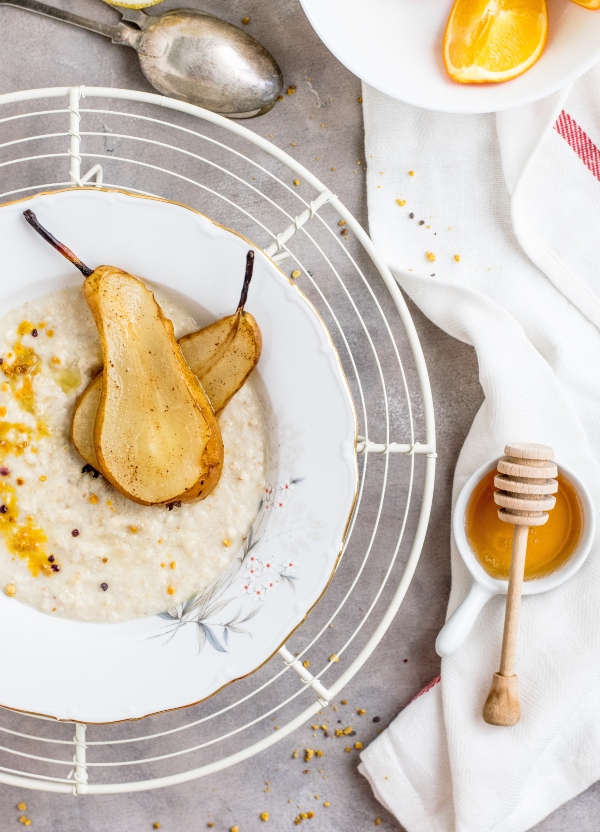
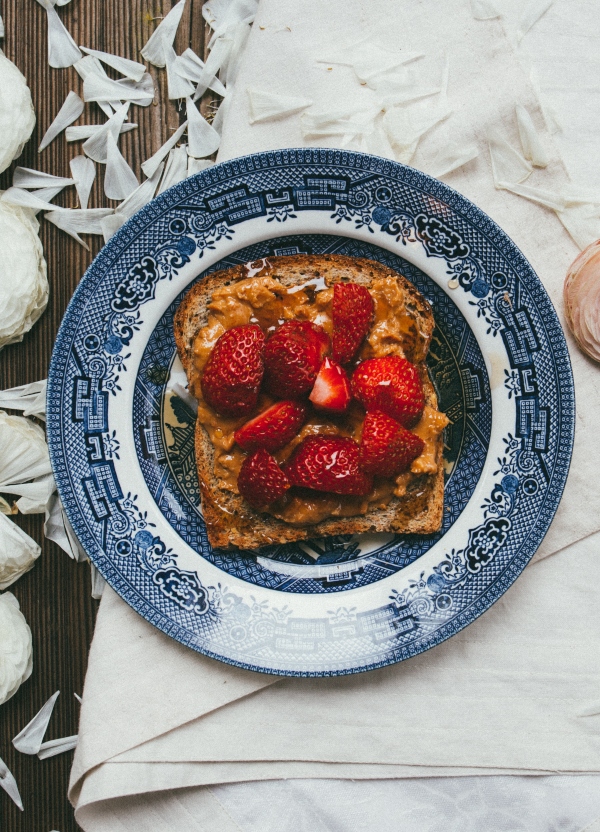
Lunch
– Whole wheat pasta and greens with almond pesto
– Jacket potato with baked beans
– Chipotle salad with black beans, avocado and wholegrain rice

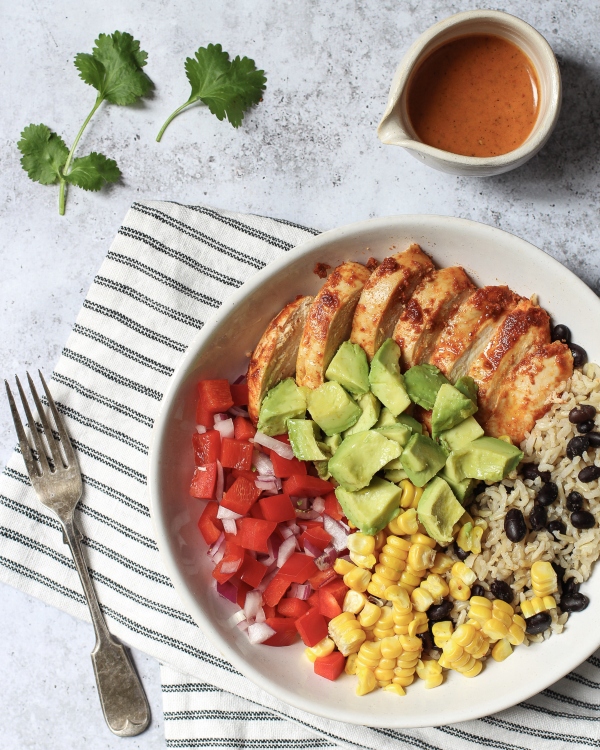
Dinner
– Chickpea curry with brown rice/ other grain
– Brown risotto with beetroot and spinach* with a side of broccoli
– Lentil bolognaise

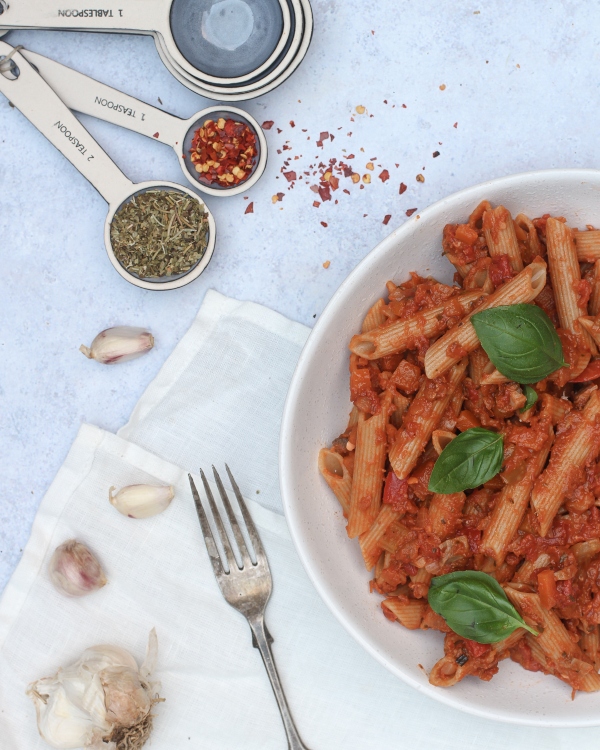

Any Questions, Let me know!

Read more articles
Eating Seasonally in the UK
We’re moving into the summer months in the UK and this is one of the best times to start trying to eat more seasonal produce. Learn more about the benefits of eating seasonally and the easiest ways to do this...
An easy trick to improve our health: Eat more fibre
Learn more about why fibre is one of my top nutrients and the best ways to increase fibre in your diet.
Join the LS Nutrition Community
Recipes & Expert Nutrition Tips in your Inbox
Stay in touch via my monthly newsletter. I share new nourishing recipes as well as practical nutrition tips. I promise never to bombard you and it’s easy to opt out at any time.
You may opt out of the newsletter at any time. Please visit the privacy policy for more information.
